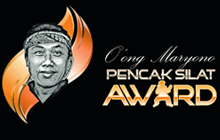“Kuntao is not self-defense”. This sentence may sound strange to us, but according to Liem Yoe Kiong (1960:215) it has some value if the name “kuntao” is taken literally. In his book “Ilmu Silat” he explains that the word “kuntao” in Hokkian dialect when translated into the Chinese official language or Kou Yu becomes “Djuen Tho” which means, “punch”. Self-defense was instead “Djuen Su” since “Su” means “knowledge” (thus knowledge of the punch). However, in Indonesia the Chinese community mostly used the Hokkian dialect since the first and most numerous generation of Chinese migrants came from the South of China where the Hokkian dialect is spoken. Therefore, the name “kuntao” in its broader albeit mistaken, meaning of self-defense became common also in Indonesia and it was soon used as synonym for silat. To people in Java, Bali, Madura, and Sulawesi, Kuntao seemed very similar to the Sumatrese Silat since it did not use music as background as gendang penca in West Java and ketepongan in the island of Madura.
A major linguistic change happened in the 1950s with the popularization of the term “silat” and the gradual disappearance of the term “kuntao”. This was due to Ko Phing Ho from Surakarta who wrote more than 300 serials of Chinese martial arts stories in newspapers, magazines and books, using the word “silat” to refer to Chinese martial arts or “kuntao”. This trends was further developed in the 1960s with the developments of comics by Yan Mintaraga and Ganes TH to promote local legends and hero such as “Si Buta dari Gua Hantu” (“The blind man from the ghost cave”) and “Panji Tenggorak (The standard with skull). Again “silat” was used to indicate to this time local martial arts.
These books and comics became very popular among the people because at the time there was no television and imported literature was limited because of political restrictions. Consequently, the term “silat” became embedded in people’s culture and substituted the use of “kuntao”. Political pressure and discriminative policies to abolish the use of Chinese languages in the Suharto’s era further strengthened this trend. In the 1970s, when Hongkong kung-fu movies with David Chiang, Ti Lung and Bruce Lee became popular and local silat movies started to be produced, people distinguished between “silat Cina” of the Kungfu movies from Hongkong and “silat Melayu” of the local action movies.
The dismissal of the term “kuntao” for both political and cultural reasons is clearly reflected by the fact that also perguruan that use “kuntao” techniques are not willing to admit it formally. For example to an observer like me, at least 80% of the techniques of Perisai Diri derives from Kuntao, while 10% is composed of Betawi, Kuningan and Cimande techniques and 10% derives from silat Minangkabau. This dominance of kuntao techniques is not surprising since the Master of Perisai Diri, R.M. Soebandiman Dirdjoatmodjo trained with the Kuntao teacher, or Suhu, Yap Kie San in Parakan, Banyumas Regency for 14 years after studying many other silat and pencak forms. When he finished to study kuntao he established in 1953 his perguruan, which is today, called “Keluarga Silat Nasional Indonesia Perisai Diri”. As the name shows, “silat” is the preferred term!
